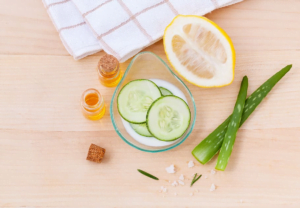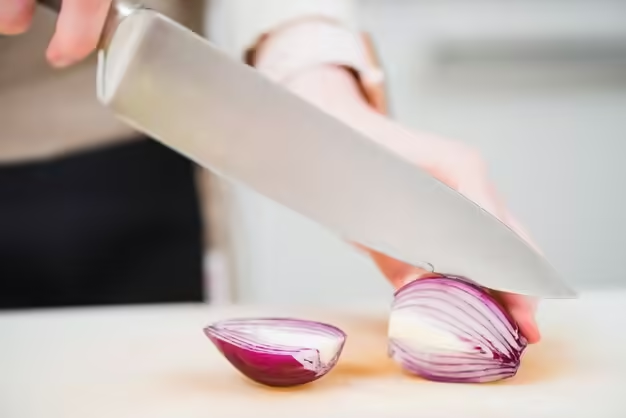” Dive into what causes hyperpigmentation Acne, how to prevent it, and explore various natural remedies and skincare habits that can reduce the appearance of these dark spots. “
Introduction
Acne can be frustrating on its own, but when those stubborn dark spots—known as hyperpigmentation—remain long after the pimples are gone, it can feel like a never-ending battle.
Many people experience this issue, and it can affect anyone, regardless of skin type or age.
If you’re struggling with acne scars and hyperpigmentation, you’re not alone—and the good news is that there are effective, natural ways to help your skin heal and regain its healthy glow.
In this post, we’ll explore various natural remedies and skincare habits that can reduce the appearance of these dark spots.
Patience and consistency are key, and by the end of this guide, you’ll have all the tools you need to start your journey toward clearer, more radiant skin.
1. Understanding hyperpigmentation acne:
Why Do Dark Spots Form?
1.Hyperpigmentation is the result of increased melanin production in the skin.
2.Melanin is the natural pigment that gives our skin its color, but when it’s overproduced, it can create dark patches or spots.
3.This often happens when our skin experiences inflammation, such as after acne, eczema, or even injuries like cuts and scrapes.
4.After acne clears up, the skin may go into overdrive, producing more melanin than usual to protect and heal the inflamed area.
5.This leads to dark spots or post-inflammatory hyperpigmentation (PIH). These spots can vary in color from light brown to deep black, depending on your skin tone, and can last for weeks or even months.
6.While hyperpigmentation acne isn’t harmful, it can be bothersome, especially when the spots linger long after your acne has healed.
7.Fortunately, there are many ways to reduce their appearance naturally and even prevent them from forming in the first place.
2. Why Acne Leaves Dark Marks:

The Connection Between Inflammation and Pigmentation
1.The journey of acne doesn’t end when the pimple is gone.
2.When our skin becomes inflamed due to a breakout, it triggers the release of enzymes that disturb the skin’s natural barrier.
3.Once this protective barrier is compromised, your skin reacts by producing melanin as a defense mechanism.
4.So, what does that mean for your acne marks? Simply put, the inflammation caused by a pimple can prompt the skin to create more pigment than it normally would.
5.This pigment gets deposited on the skin’s surface, causing those brown or dark spots that are often left behind after the acne has healed.
6.These marks are different from acne scars, which result from damage to the deeper layers of the skin and typically involve a change in the skin’s texture, such as indentations or raised scars. Hyperpigmentation, on the other hand, is purely a discoloration and doesn’t affect the texture of your skin.
7.While hyperpigmentation acne might not affect the texture of your skin, it can still be difficult to manage.
8.The good news is that since hyperpigmentation is a surface-level issue, it’s easier to treat with consistent care.
3. How to Prevent Hyperpigmentation:
Simple Tips for Every Day
One of the best ways to deal with hyperpigmentation acne is to prevent it from happening in the first place.
While not every breakout is avoidable, there are some key skincare habits you can adopt to reduce your chances of developing those dark spots.
a) Use Sunscreen Every Day
1.Sunscreen is a non-negotiable when it comes to preventing and treating hyperpigmentation.
2. UV exposure can worsen dark spots by triggering even more melanin production in the skin.
3. By wearing a broad-spectrum sunscreen with at least SPF 30 every day, you’re protecting your skin from further darkening and giving your skin the time it needs to heal.
4.Look for sunscreens that are labeled as non-comedogenic, meaning they won’t clog your pores, which can help prevent more breakouts.
b) Don’t Pick at Your Pimples
1.We’ve all been there—picking at a pimple feels like a quick fix, but in reality, it’s one of the worst things you can do for your skin.
2.Picking and squeezing your acne irritates the skin, making inflammation worse and increasing the likelihood that your skin will produce more melanin, leading to a dark spot.
3.Instead, treat your acne with care. Use gentle cleansers and spot treatments to reduce inflammation and speed up healing.
c) Keep Your Skin Moisturized
1.Dry, irritated skin is more prone to inflammation, which can lead to hyperpigmentation acne.
2. A well-moisturized skin barrier is less likely to become inflamed, meaning fewer dark spots down the road.
3.Look for moisturizers that are formulated with calming ingredients like aloe vera, glycerin, or hyaluronic acid to soothe and hydrate your skin.
d) Exfoliate Regularly, But Gently
1.Exfoliation can help prevent hyperpigmentation acne by removing dead skin cells, promoting cell turnover, and allowing new, fresh skin to surface.
2. However, it’s important not to overdo it, as over-exfoliation can irritate your skin and worsen inflammation, leading to more hyperpigmentation.
3.Consider using a gentle exfoliator once or twice a week.
4. Natural Remedies for Hyperpigmentation:

DIY Solutions
Many of these ingredients are already in your kitchen or can be easily found in your local grocery store. Let’s explore a few tried-and-true remedies.
a) Aloe Vera
1.Aloe vera is one of the most popular natural remedies for hyperpigmentation acne—and for good reason.
2.It’s known for its soothing and healing properties and contains a compound called aloesin, which has been shown to reduce melanin production.
3.By regularly applying aloe vera gel to your skin, you can help lighten dark spots and promote an even complexion.
To use:
1.after applying aloe vera gel on your dark spots Leave it on for 20-30 minutes, then rinse off with lukewarm water.
2.Repeat daily for the best results.
b) Turmeric
1.Turmeric contains curcumin, an active compound that can help reduce pigmentation by slowing down melanin production.
2.Turmeric can also calm irritated skin and promote healing.
To use:
1.Mixture of turmeric, honey, yogurt.
2.Apply the mixture to your dark spots and leave it on for 10-15 minutes.
3.Rinse with warm water and pat dry.
4.Use this mask 2-3 times a week.
c) Lemon Juice
Lemon juice can help lighten dark spots over time, but it’s important to use it carefully, as it can also be drying or irritating for some skin types.
To use:
1,After 10 minutes Applying fresh lemon juice affected areas wash with water.
2.Always follow up with moisturizer and sunscreen, as lemon juice can make your skin more sensitive to the sun.
Note: If you have sensitive skin, it’s best to dilute the lemon juice with water or use it in combination with honey to reduce the risk of irritation.
d) Honey
1.Honey has mild bleaching properties and can be used to brighten dark spots when applied regularly.
2.Honey’s anti-inflammatory properties can also help calm irritated skin and reduce redness.
To use:
1.Apply a thin layer of raw honey to your dark spots.
2.Leave it on for 20 minutes before rinsing with lukewarm water.
3.Repeat daily for gradual lightening.
e) Apple Cider Vinegar
1.Apple cider vinegar contains acetic acid, which may help lighten pigmentation by exfoliating the skin and promoting cell turnover.
2.However, it’s important to use apple cider vinegar carefully, as it can be quite strong and potentially irritating.
To use:
1.Diluted part apple cider vinegar Apply to your dark spots with a cotton .
2.Leave it on for 5-10 minutes, then rinse with cool water.
3.Start by using this remedy once a day and increase to twice daily if your skin tolerates it well.
f) Green Tea Extract
1.Green tea is rich in antioxidants, particularly a compound called epigallocatechin gallate (EGCG), which can help reduce inflammation and inhibit melanin production.
2.You can use green tea both topically and internally for its skin benefits.
To use:
1.Dip a cotton ball in the brewed tea and apply it to your dark spots and wash it after 15-20 minutes.
2.Drinking green tea daily can also support overall skin health.
5. Daily Skincare Habits

To Lighten hyperpigmentation acne
Here’s a simple, effective routine to follow:
a) Cleanse Gently
1.Start your day with a gentle, non-comedogenic cleanser that won’t strip your skin of its natural oils.
2.Cleansing removes dirt, oil, and leftover makeup, preparing your skin for the rest of your routine.
3.Over-cleansing or using harsh cleansers can irritate your skin and worsen hyperpigmentation acne, so it’s crucial to choose a product that’s mild yet effective.
4.Look for cleansers with soothing ingredients like chamomile, aloe vera, or green tea extract, which help calm inflammation.
5.Cleansing twice daily—once in the morning and once at night—is generally ideal to maintain skin health without overdoing it.
b) Exfoliate (But Not Too Much)
1.Exfoliation is key to promoting cell turnover and helping dark spots fade faster.
2.However, over-exfoliating can irritate the skin, making hyperpigmentation acne worse.
3.Ideally, exfoliate 2-3 times a week, depending on your skin’s sensitivity.
4.Physical exfoliators contain tiny granules to slough off dead skin cells, while chemical exfoliators contain ingredients like AHAs (alpha hydroxy acids) or BHAs (beta hydroxy acids) that dissolve the bonds between dead skin cells.
5.While both types can help reduce hyperpigmentation acne chemical exfoliants are often gentler and more effective over time.
c) Apply Vitamin C
1.Vitamin C is one of the most powerful natural ingredients for fighting hyperpigmentation acne.
2.It works by inhibiting melanin production, reducing the appearance of dark spots, and promoting a more even skin tone.
3.Look for a vitamin C serum with a stable form of vitamin C, such as ascorbic acid, to ensure you’re getting the full benefits.
4.Apply your vitamin C serum remember after cleansing and before moisturizing apply your vitamin C serum.
5. Be patient—vitamin C works gradually, but over time, it can make a noticeable difference in your skin’s brightness and clarity.
d) Moisturize and Protect
1.Moisturizing is essential for healing hyperpigmentation acne.
2. When your skin is hydrated, it functions better, heals faster, and becomes less prone to irritation.
3.Choose a moisturizer that contains hydrating ingredients like hyaluronic acid, glycerin.
4.For added benefits, look for moisturizers that include ingredients known for their brightening properties, such as niacinamide or licorice root extract.
5. These can help fade dark spots over time while keeping your skin soft and supple.
6.After moisturizing, always apply sunscreen, even if you’re staying indoors.
7. UV rays can penetrate windows and continue to darken hyperpigmentation acne, so broad-spectrum protection is a must.
e) Spot Treatments
1.Incorporating a spot treatment specifically designed for hyperpigmentation acne can help target stubborn areas.
2.Look for natural brightening agents like kojic acid, licorice root extract, or arbutin, which work by slowing melanin production.
3.Apply these treatments directly to dark spots and combine them with your regular skincare routine for the best results.
6. Diet and Lifestyle

Changes to Support Clear Skin
Your skin’s health isn’t just influenced by what you apply topically—what you eat and how you live can play a huge role in preventing and managing hyperpigmentation.
Here are some tips on how you can support your skin from the inside out.
a) Eat a Skin-Friendly Diet
1.A diet rich in antioxidants, vitamins, and healthy fats can help improve your skin’s appearance and reduce the chances of inflammation that could lead to hyperpigmentation acne.
2.Include foods high in vitamin C, vitamin E, beta-carotene, and omega-3 fatty acids in your meals.
3.Vitamin C-rich foods: Oranges, bell peppers, strawberries, and leafy greens.
4.Vitamin E-rich foods: Almonds, sunflower seeds, and spinach.
5.Beta-carotene-rich foods: Carrots, sweet potatoes, and pumpkins.
These nutrients support the skin’s healing process, reduce inflammation, and help your skin maintain its natural glow.
b) Stay Hydrated
1.Water plays a vital role in keeping your skin clear and hydrated. Dehydration can lead to dry, flaky skin, which may exacerbate hyperpigmentation acne
2. Aim to drink at least 8 glasses of water a day, and consider consuming hydrating foods like cucumbers, watermelon, and citrus fruits to give your skin an extra boost of moisture.
c) Manage Stress
1.High levels of stress can trigger hormonal imbalances and cause skin flare-ups, including acne and hyperpigmentation acne.
2.Practicing stress-relieving activities like yoga, meditation, or even simple deep-breathing exercises can help keep your stress in check and improve your overall skin health.
d) Get Enough Sleep
1.Sleep is when your body—and your skin—gets to heal and regenerate.
2.Lack of sleep can lead to increased stress hormones, causing inflammation and worsening hyperpigmentation acne.
3.Aim for 7-9 hours of quality sleep each night to support your skin’s natural recovery process.
7. Professional Treatments for Hyperpigmentation

While natural remedies and a good skincare routine can work wonders for hyperpigmentation acne, sometimes professional treatments can give you a faster or more noticeable result. Here are a few options to consider if you want to speed up the process.
a) Chemical Peels
1.Chemical peels involve applying a solution to your skin that exfoliates and removes the top layers, encouraging new skin to grow.
2. Peels can vary in strength, with mild peels using glycolic acid or salicylic acid, and stronger peels requiring professional application by a dermatologist.
3.Chemical peels can be highly effective for treating hyperpigmentation acne, but they do come with some downtime, as your skin may peel and be more sensitive for a few days after treatment.
b) Microdermabrasion
1.Microdermabrasion is a non-invasive treatment that uses tiny crystals or a diamond-tipped wand to gently exfoliate the outer layer of skin.
2.This process encourages skin regeneration and can help reduce the appearance of hyperpigmentation acne over time.
3.This treatment is generally safe for most skin types and requires little to no downtime.
c) Laser Therapy
1.Laser treatments target hyperpigmented areas by focusing on the excess melanin in the skin.
2. The laser breaks up the pigment, which is then naturally removed by your body.
3.This treatment can be highly effective for stubborn dark spots, but it’s important to work with a qualified professional to minimize the risk of complications.
d) Microneedling
1.Microneedling involves using tiny needles to create micro-injuries in the skin, which prompts your skin to produce more collagen and elastin.
2.This process helps with both hyperpigmentation acne and acne scars by promoting the turnover of new skin cells.
3.While microneedling is generally safe, it’s important to have it done by a professional to avoid infections or further skin damage.
Conclusion
1.Dealing with hyperpigmentation acne can be a long and sometimes frustrating process, but with the right combination of preventive care, natural remedies, and healthy lifestyle changes, you can gradually reduce the appearance of those stubborn dark spots.
2. Remember that consistency is key—your skin won’t change overnight, but with patience and a dedicated routine, you’ll start to see the results you’re hoping for.
3.Whether you choose to go the natural route or opt for professional treatments, taking good care of your skin inside and out will not only help with hyperpigmentation acne but also support your overall skin health.
Be kind to your skin, and it will reward you with a brighter, more radiant complexion over time.



